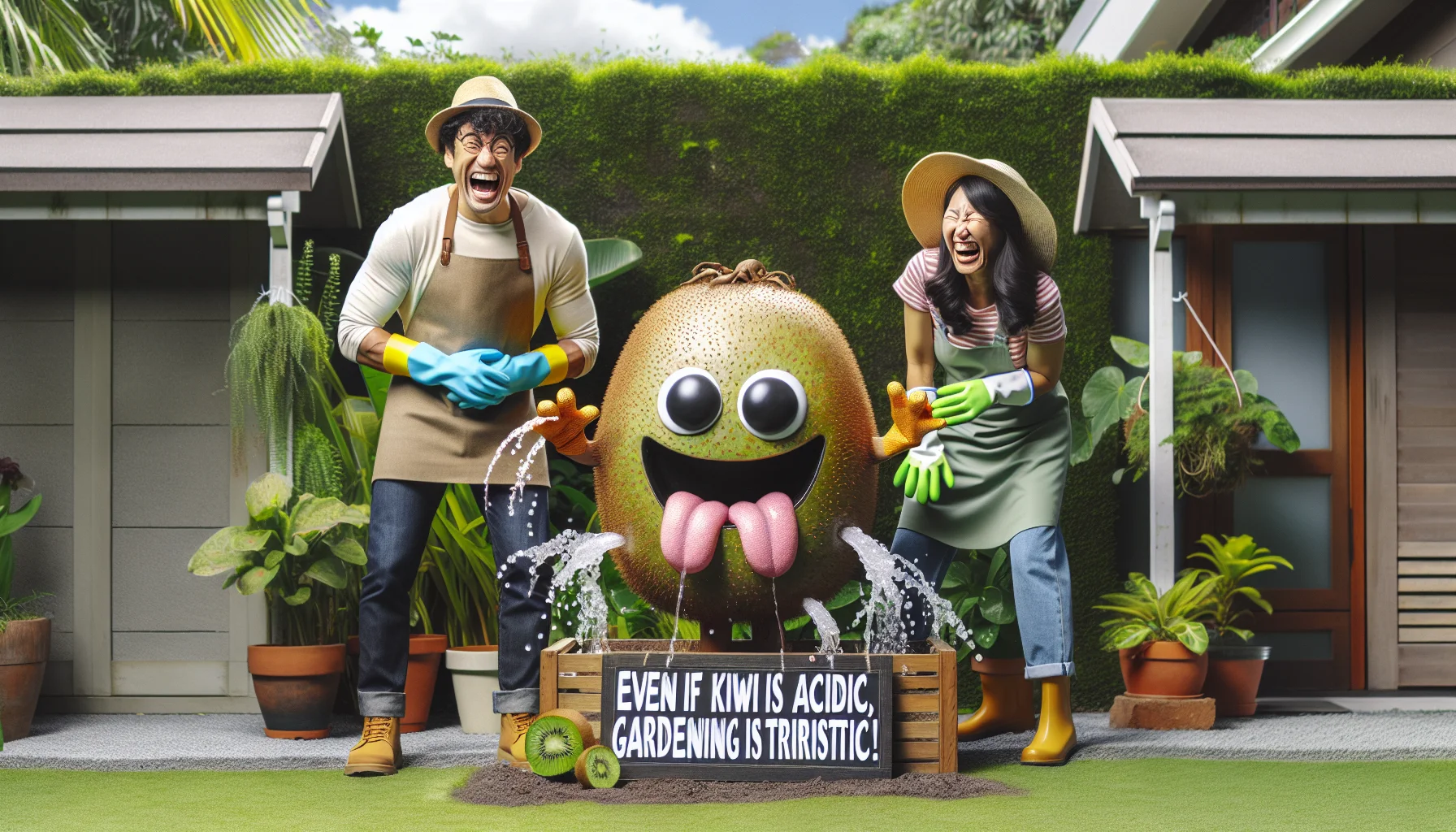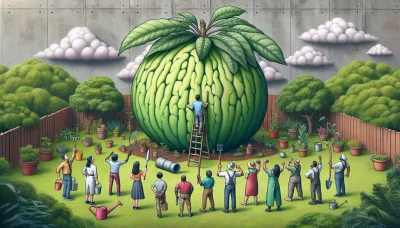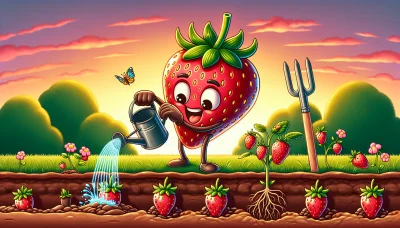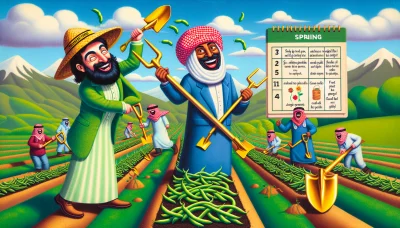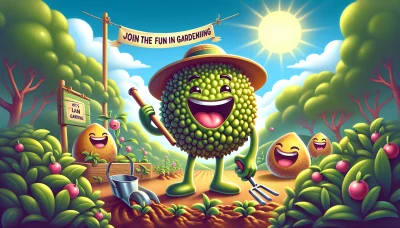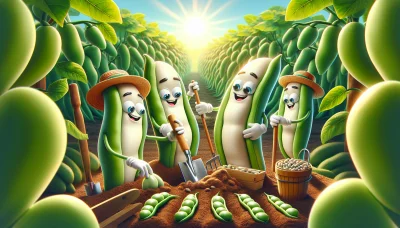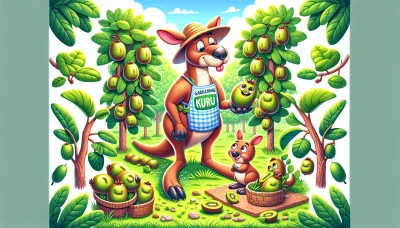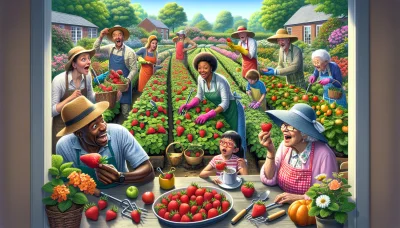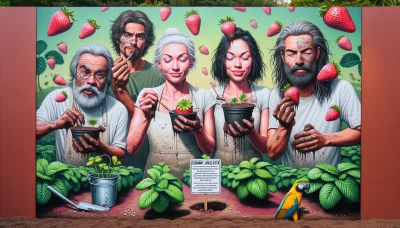Is kiwi acidic Quiz
Test Your Knowledge
Question of
Is Kiwi Acidic? Understanding the pH Levels
The pH level of soil is a crucial factor in gardening, significantly influencing the growth and health of plants, including kiwi. The pH scale, which ranges from 0 to 14, measures how acidic or alkaline the soil is. Kiwi plants thrive in slightly acidic to neutral soil, with an ideal pH range of 5.5 to 7. This acidity level helps kiwi plants absorb the necessary nutrients from the soil efficiently. Understanding and maintaining the correct pH balance is essential for the successful cultivation of kiwi, as it affects not only the plant's growth but also its fruit production and quality.
The Acidity of Kiwi Fruit
Kiwi fruit, known for its bright green flesh and distinctive sweet-tart flavor, owes much of its taste profile to its natural acidity. This acidity, primarily composed of citric and ascorbic acids, not only defines the kiwi's refreshing quality but also impacts its nutritional benefits, aiding in the absorption of various minerals. For consumers, especially those with sensitive stomachs, the acidity of kiwi fruit can be a double-edged sword; while beneficial in moderate amounts, excessive consumption may lead to discomfort or exacerbate certain digestive conditions.
From an agricultural standpoint, the natural acidity of kiwi plants plays a significant role in soil health. Kiwi plants prefer slightly acidic soil conditions for optimal growth. This preference means that the soil's pH balance must be carefully managed in kiwi orchards, as overly acidic or too alkaline soil can hinder plant development and fruit production. Moreover, the decomposition of kiwi plant matter, including fallen fruits and leaves, can influence the soil's acidity over time, affecting not only future kiwi crops but also the broader ecosystem in which they are grown.
How to Test Soil pH for Kiwi Plants
Kiwi plants require a specific soil pH range to thrive, ideally between 5.5 and 6.5. Testing the soil pH is crucial for ensuring the health and productivity of your kiwi plants. There are several methods to test soil pH, including using a pH meter, pH test strips, or a chemical dye test. A pH meter provides a digital reading and is considered highly accurate. pH test strips, while less precise, offer a quick and easy way to estimate soil pH. The chemical dye test involves adding a soil sample to a solution that changes color based on the pH level, which is then compared to a color chart. No matter which method you choose, regularly testing the soil pH and adjusting it as necessary can help your kiwi plants flourish.
Adjusting Soil pH for Kiwi Plants
To cultivate kiwi plants successfully, achieving the correct soil pH is crucial, as these plants thrive in slightly acidic to neutral soil, ideally between 5.5 and 7.0. If your soil's pH is outside this range, here are some steps to adjust it:
- To lower the pH (make the soil more acidic): Incorporate elemental sulfur or aluminum sulfate into the soil. The amount needed depends on the current pH and the soil type (sand, loam, or clay). It's best to add these amendments several months before planting, as it takes time for the pH to adjust.
- To raise the pH (make the soil less acidic): Add garden lime (calcium carbonate) or dolomitic lime (which also adds magnesium). The quantity required varies with the soil's existing pH level and texture. Like lowering the pH, raising it is a gradual process, so apply lime well in advance of planting.
Before making any adjustments, it's essential to test your soil's pH using a soil test kit or by sending a sample to a local extension service. This will give you a clear starting point for making the necessary modifications. Regularly retesting the soil after applying amendments will help you monitor progress and make further adjustments as needed.
The Impact of Soil Acidity on Kiwi Plant Health
- Reduction in Root Growth: High soil acidity can lead to a decrease in root growth, affecting the plant's ability to absorb water and nutrients.
- Nutrient Availability: Certain nutrients become less available in acidic soils, potentially leading to deficiencies that can stunt growth and reduce fruit quality.
- Aluminum Toxicity: Acidic soils often release aluminum, which can be toxic to kiwi plants, damaging the root system and further inhibiting nutrient uptake.
- Impact on Microbial Activity: Soil acidity can negatively affect the microbial activity in the soil, disrupting the natural processes that make nutrients available to plants.
- Reduced Fruit Size and Quality: The adverse effects on the plant's growth and nutrient uptake can lead to smaller fruits and compromise the overall quality of the kiwi produced.
- Increased Susceptibility to Diseases: Kiwi plants in acidic soils may become more vulnerable to certain soil-borne diseases, impacting plant health and fruit yield.
Frequently Asked Questions About Kiwi Acidity
-
What is the acidity level of kiwi fruits?
Kiwi fruits typically have a pH level ranging from 3.1 to 3.9, making them moderately acidic.
-
Can the acidity of kiwi affect soil pH?
Yes, like any organic matter, when kiwi residues decompose in the soil, they can affect soil pH, potentially lowering it due to their acidity.
-
Is acidic soil good for growing kiwi plants?
Kiwi plants generally prefer slightly acidic to neutral soil, with an optimal pH range of 5.5 to 7.0 for healthy growth.
-
How can I adjust my soil's pH for kiwi plants?
To increase soil pH, lime can be added, while sulfur or peat moss can help to lower the pH for environments that are too alkaline for kiwi plants.
-
Does kiwi acidity have any benefits?
Yes, the natural acidity of kiwi can help in breaking down certain soil minerals, making nutrients more available to the plants. Additionally, the acidic nature of kiwi can help in controlling pests.
-
How often should I test my soil's pH if I'm growing kiwi?
It's advisable to test your soil's pH annually, as soil conditions can change and affect the availability of nutrients essential for kiwi growth.
-
Can kiwi acidity affect other plants in my garden?
While kiwi acidity primarily influences the immediate area around the plant, it can affect neighboring plants if they have different pH preferences. It's important to plan your garden layout considering the pH needs of each plant.
Conclusion: Balancing Acidity for Healthy Kiwi Growth
The success of kiwi gardening hinges significantly on understanding and managing the acidity levels both in the fruit and the soil it grows in. Kiwi plants thrive in slightly acidic soil, with a pH range ideally between 5.5 and 6.5. This balance is crucial not only for the health of the plant but also for the quality of the fruit it produces. Too much acidity or alkalinity can hinder nutrient absorption, leading to poor plant growth and fruit development. Therefore, regular soil testing and appropriate amendments are essential practices for maintaining the ideal pH level, ensuring that kiwi plants remain vibrant and productive. This careful balance underscores the broader principle that successful gardening is a delicate dance with nature, requiring attention, knowledge, and respect for the plants' environmental needs.
